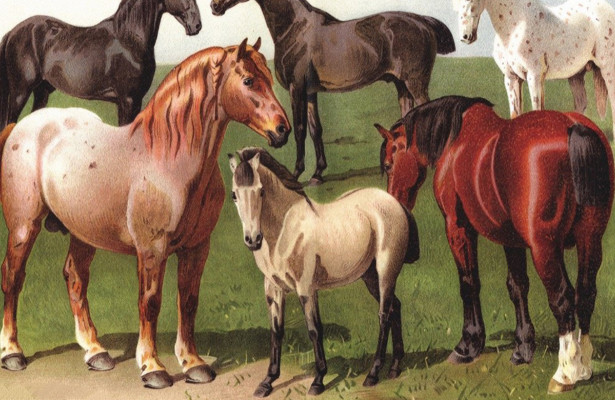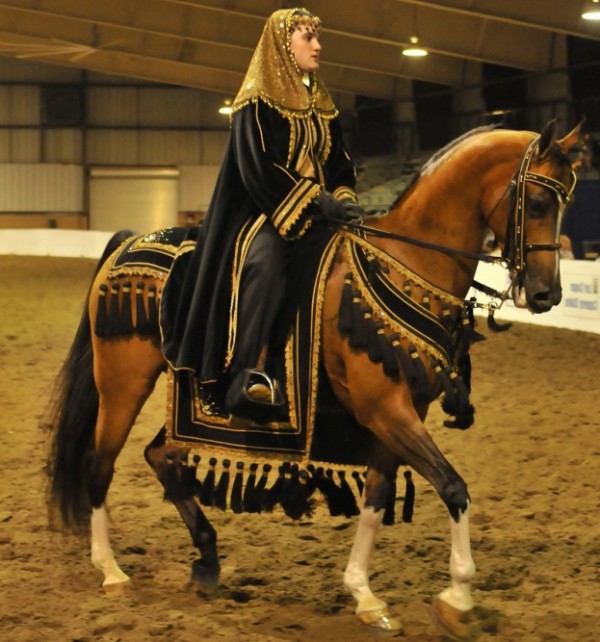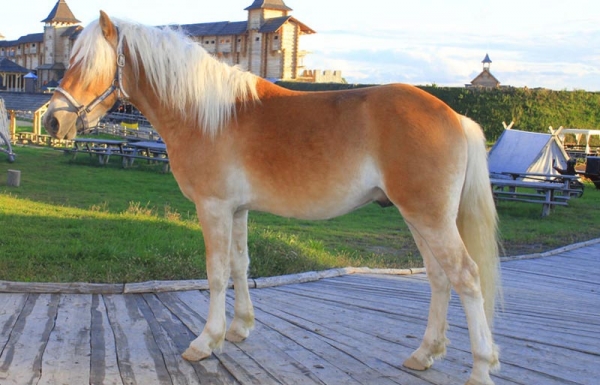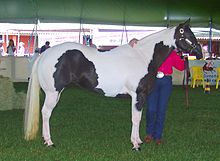nastya
American curly horse
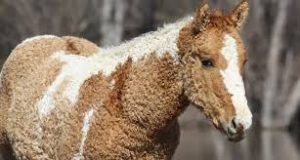 Folk selection
Folk selection
Enterprising farmers decided to cross caught mustangs with their own horses. Soon this initiative was supported by their neighbors. So in the selection process was attended not only the horse Morgan, a breed popular in those days, but even purebred Arabian horses.
Officially, the new breed was registered in 1971 under the name American Bashkir Curly Horse (American Curly Bashkir).
Currently, it allows many varieties. Only the presence of curly wavy hair is common.
American Curly Horse Photo
It has been documented that similar horses were among the Sioux and Crow Indians at the beginning of the 19th century. Presumably, they came to them from Russian settlers who allegedly brought Transbaikal curly horses (Bashkirs) to the American continent. Continue reading
Marvarian horse (part 1)
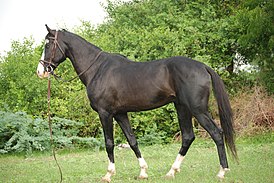 The Marwar horse (Marvari), or Malani, is a rare breed of horse from Marwar, a region in India. Known for its exotic ear shape. They are known for their stamina and are quite similar to kathiyavari, another Indian breed from Kathiyavar. Marwari came from crossing local Indian ponies with an Arabian horse, possibly with some influence from Mongolian horses.
The Marwar horse (Marvari), or Malani, is a rare breed of horse from Marwar, a region in India. Known for its exotic ear shape. They are known for their stamina and are quite similar to kathiyavari, another Indian breed from Kathiyavar. Marwari came from crossing local Indian ponies with an Arabian horse, possibly with some influence from Mongolian horses.
The Rathors, the traditional rulers of Marwar, were the first to start breeding Marwar. Starting from the 12th century, they strictly selected horses for breeding, which contributed to the purity of blood and endurance. Used throughout history as the cavalry horses of the Marwar people, they have been noted as loyal and brave in battle. The breed deteriorated in the 1930s when poor management practices led to a reduction in livestock numbers, but today they have been restored again. Marvari was banned for decades, but between 2000 and 2006 a small amount was allowed. An exception was made for the American Francesca Kelly, who became the organizer of the Indigenous Horse Society of India [1]. Since 2008, visas allowing the exit of the marvari outside of India have been available in small quantities. Continue reading
Marvarian horse (part 2)
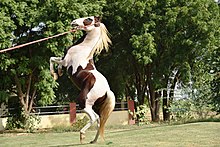 Breed description
Breed description
Bouncing marvari
The average growth of marvari is 152-163 cm. Horses originating from different parts of India, as a rule, have a height in the range of 142-173 cm. They can be bay, gray, red, salted and pinto. Despite the fact that white dominant horses are bred in India for religious purposes, they are usually not recorded in the studbook. Gray and pinto horses are considered the most valuable. Ravens are considered unhappy, and their color is a symbol of death and darkness. Horses that have a white mark on their faces and four socks are considered lucky. Continue reading
